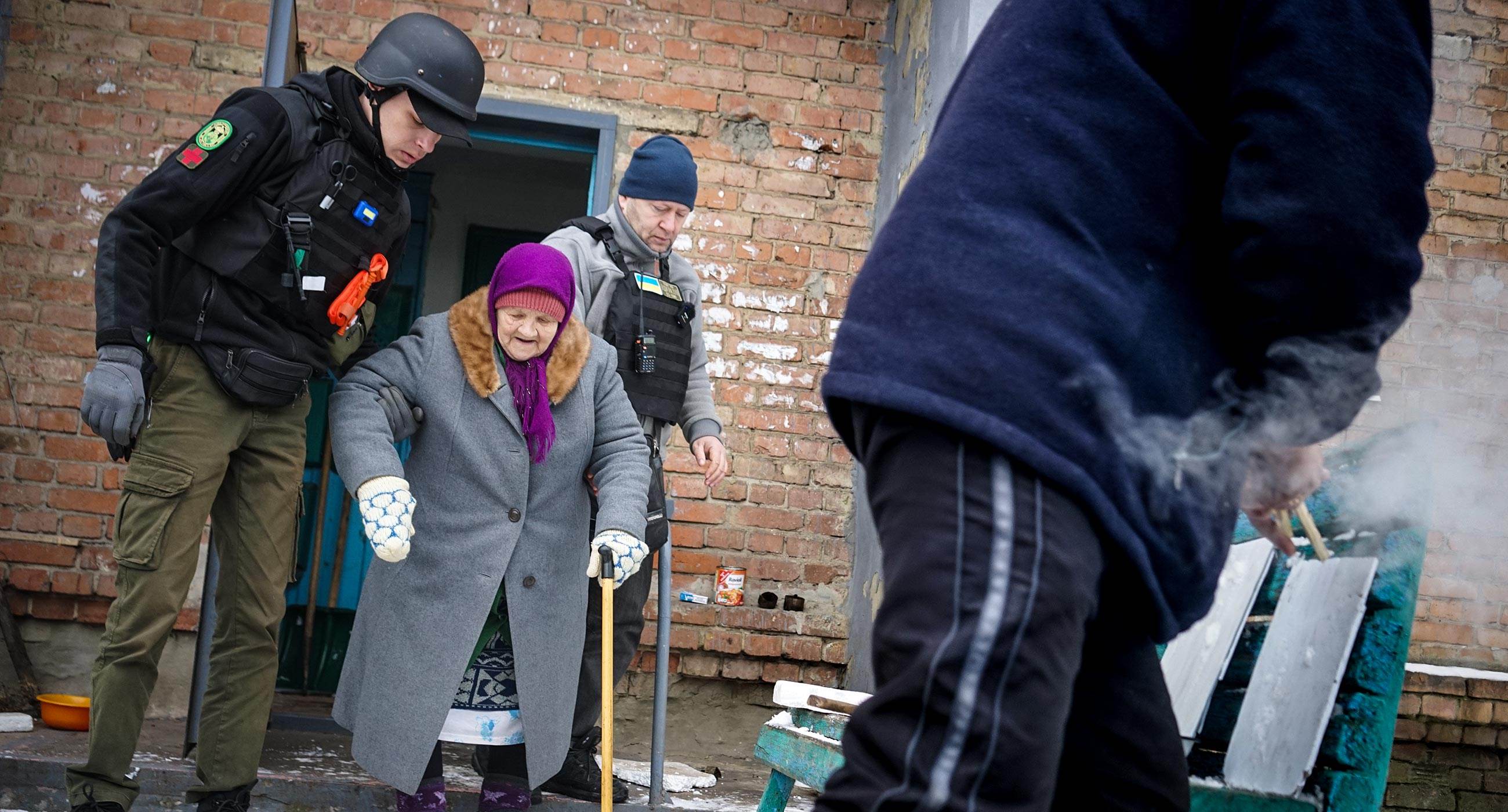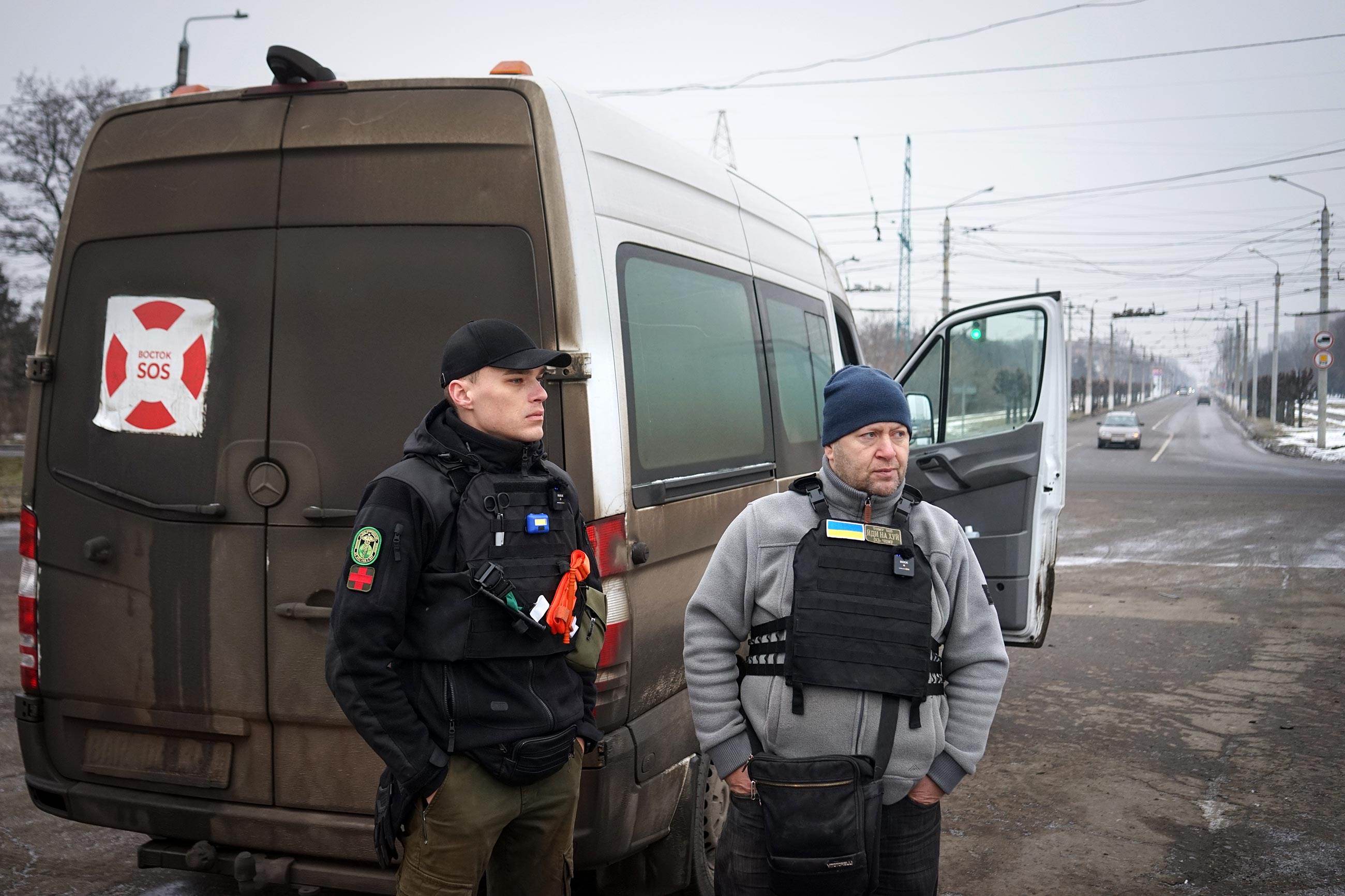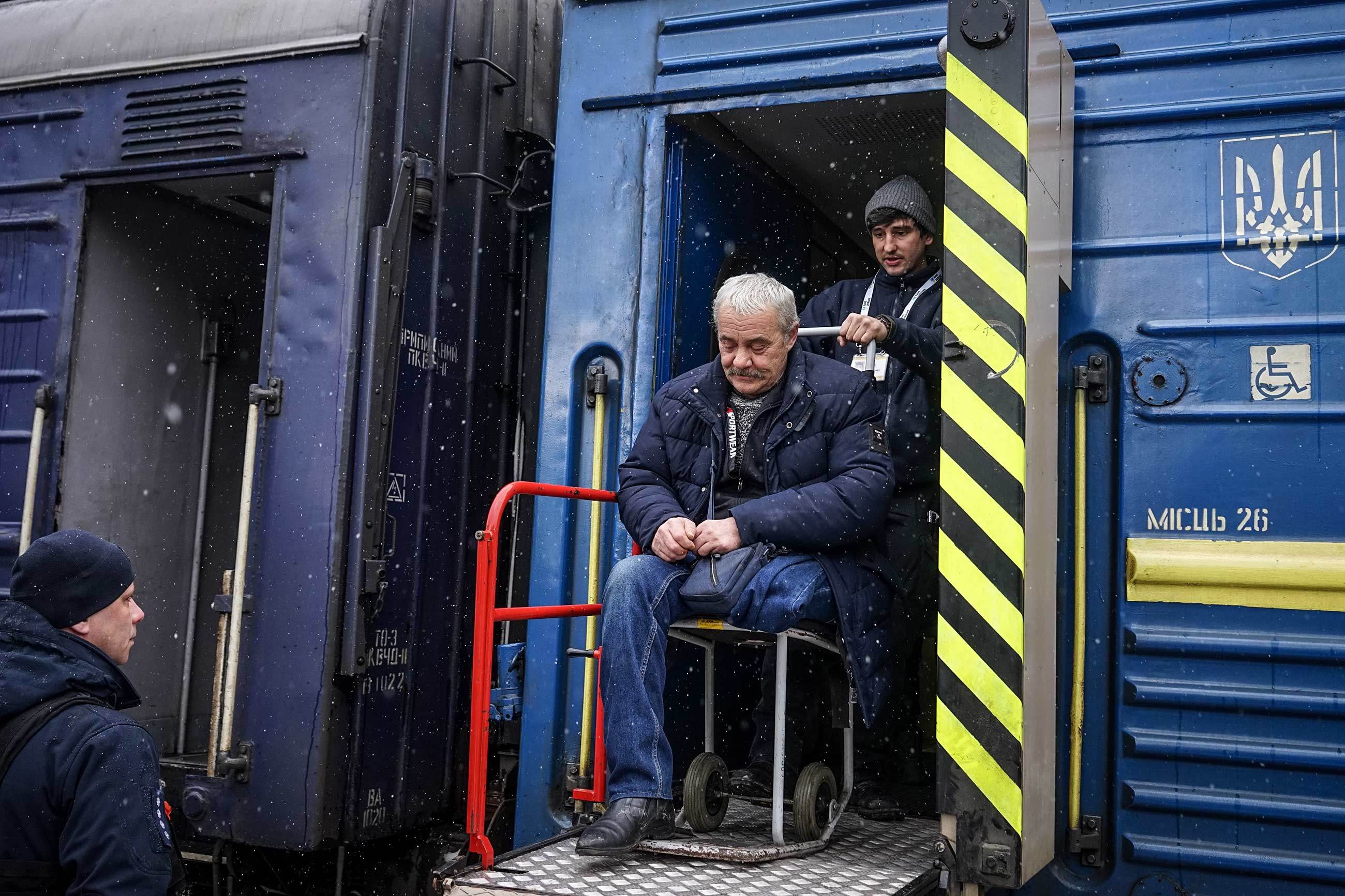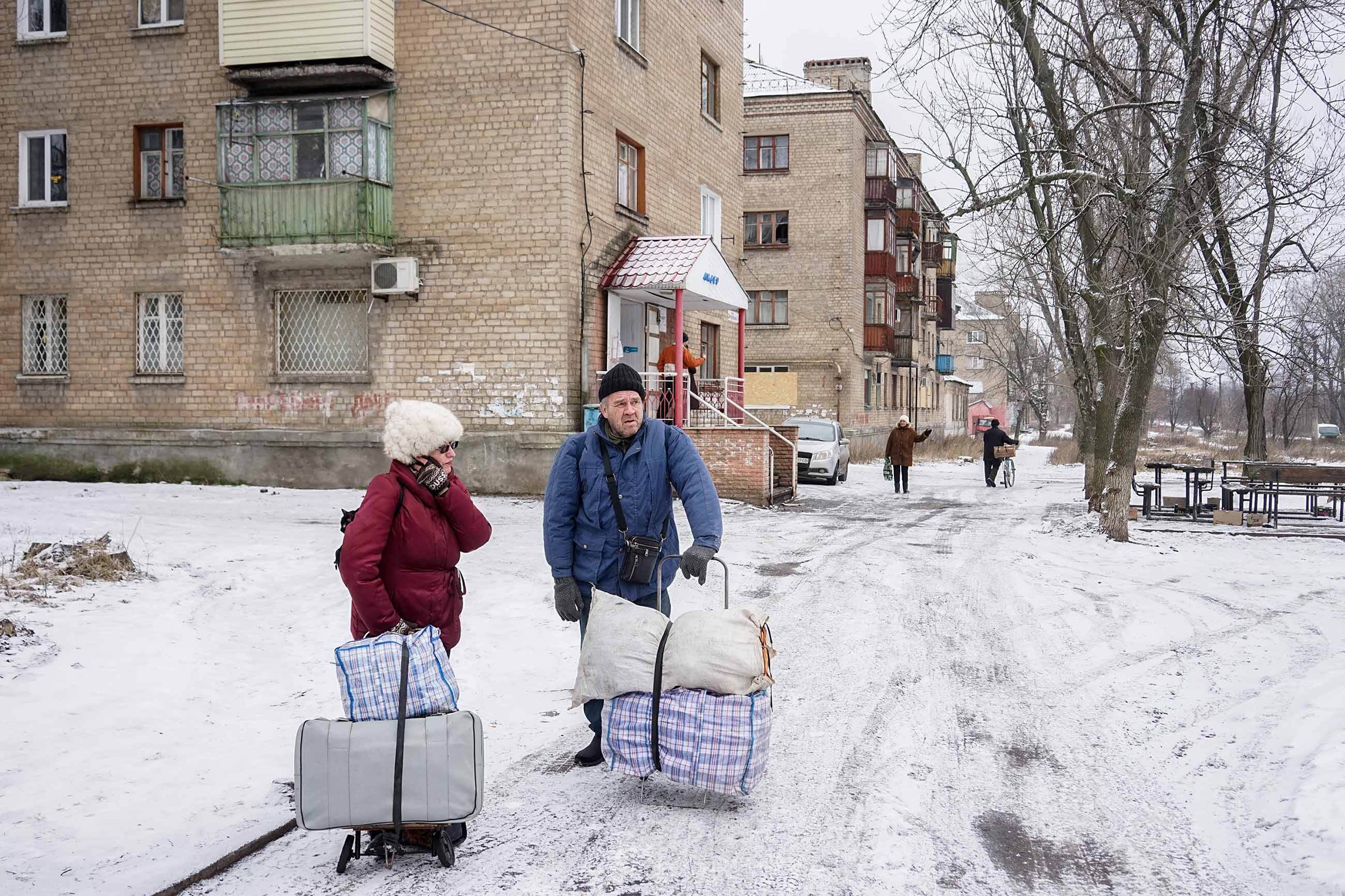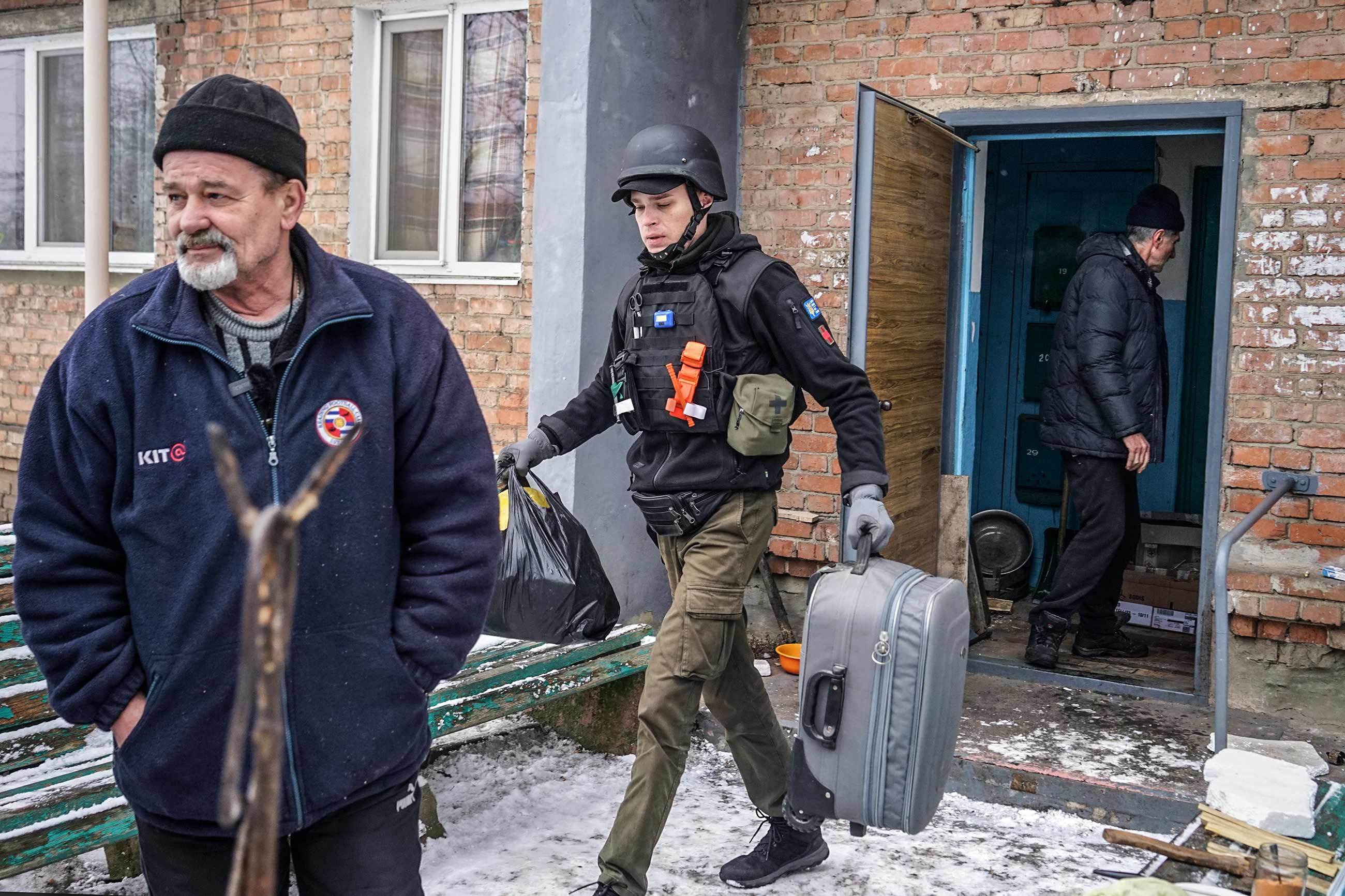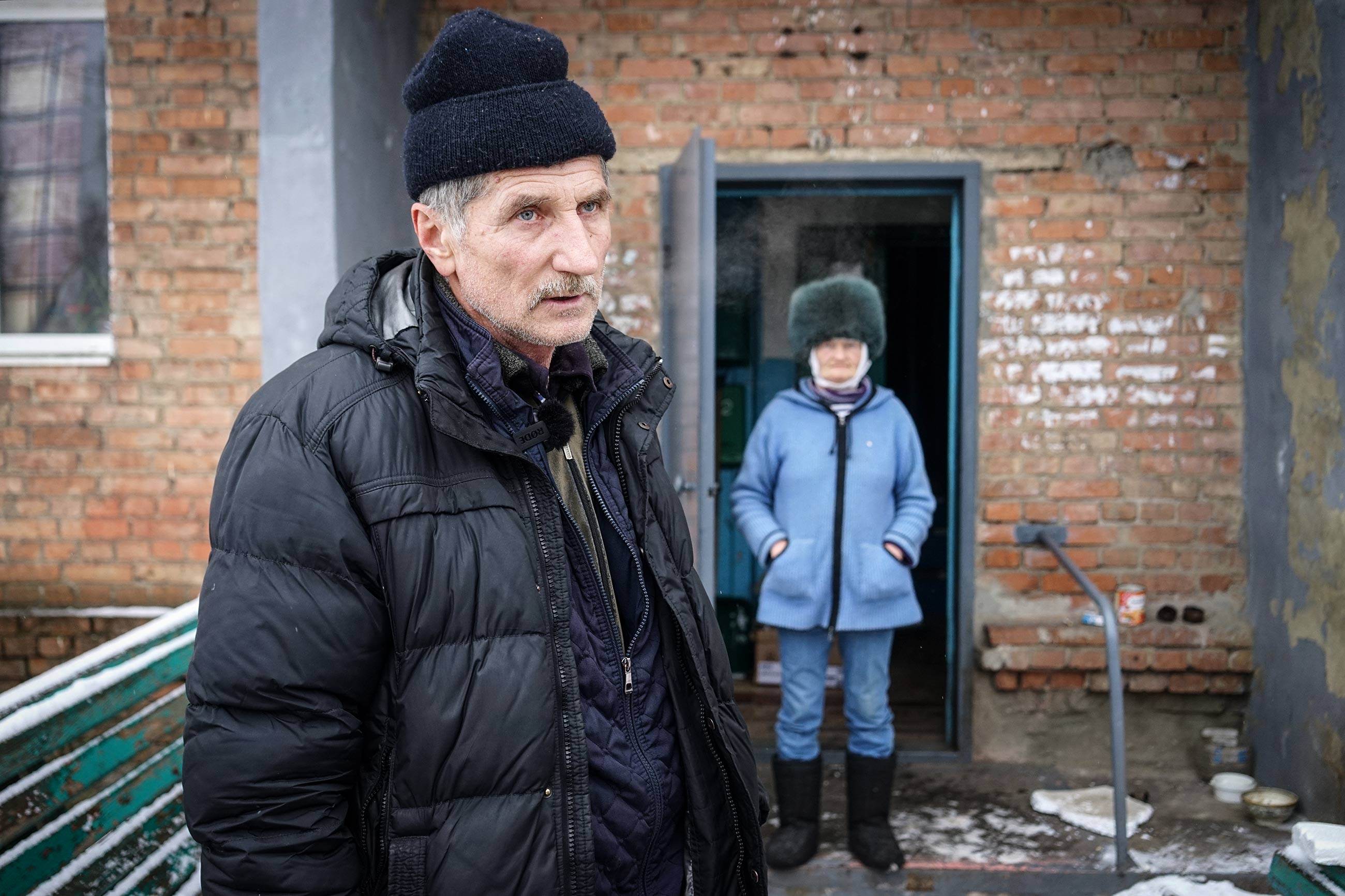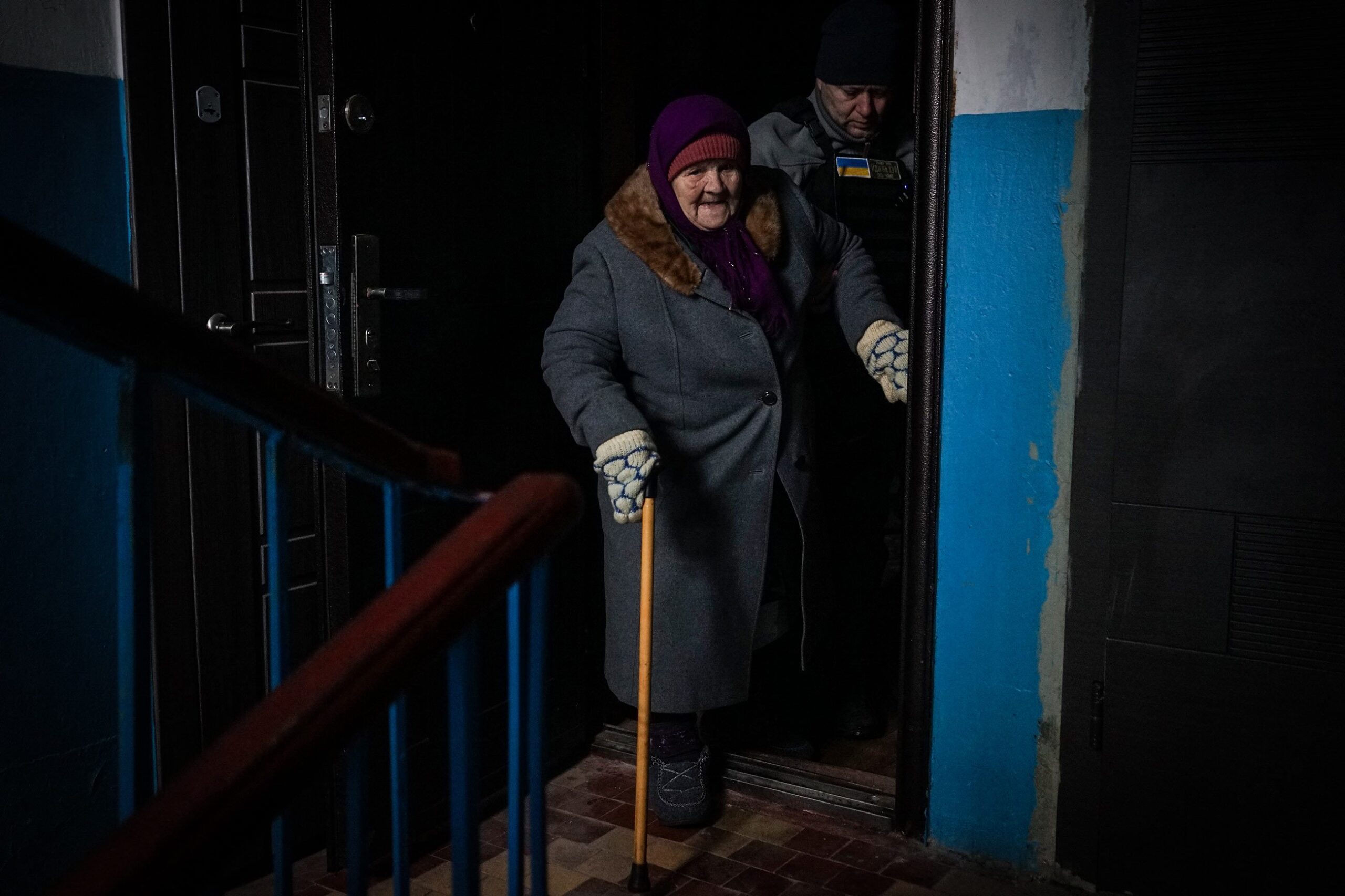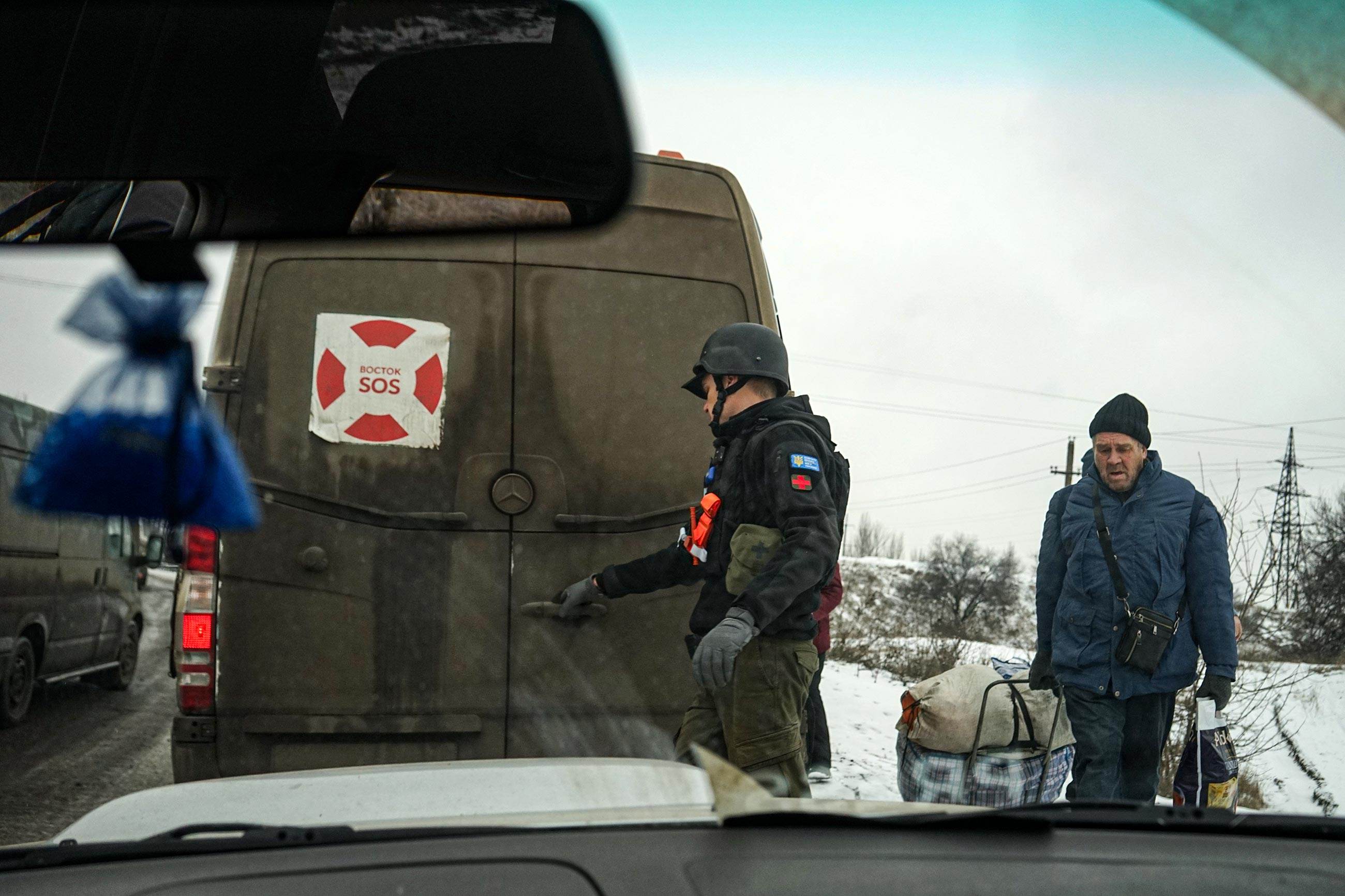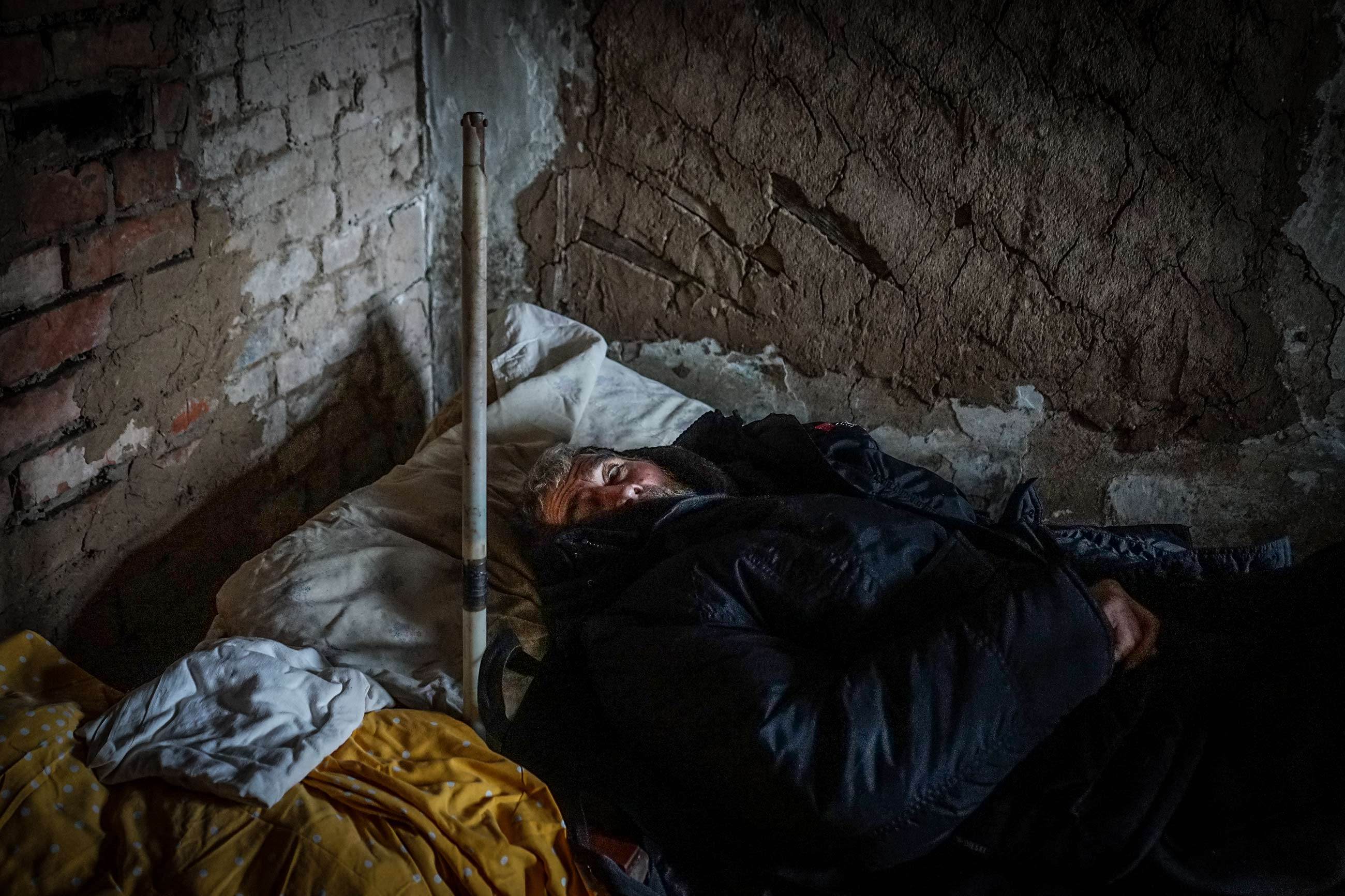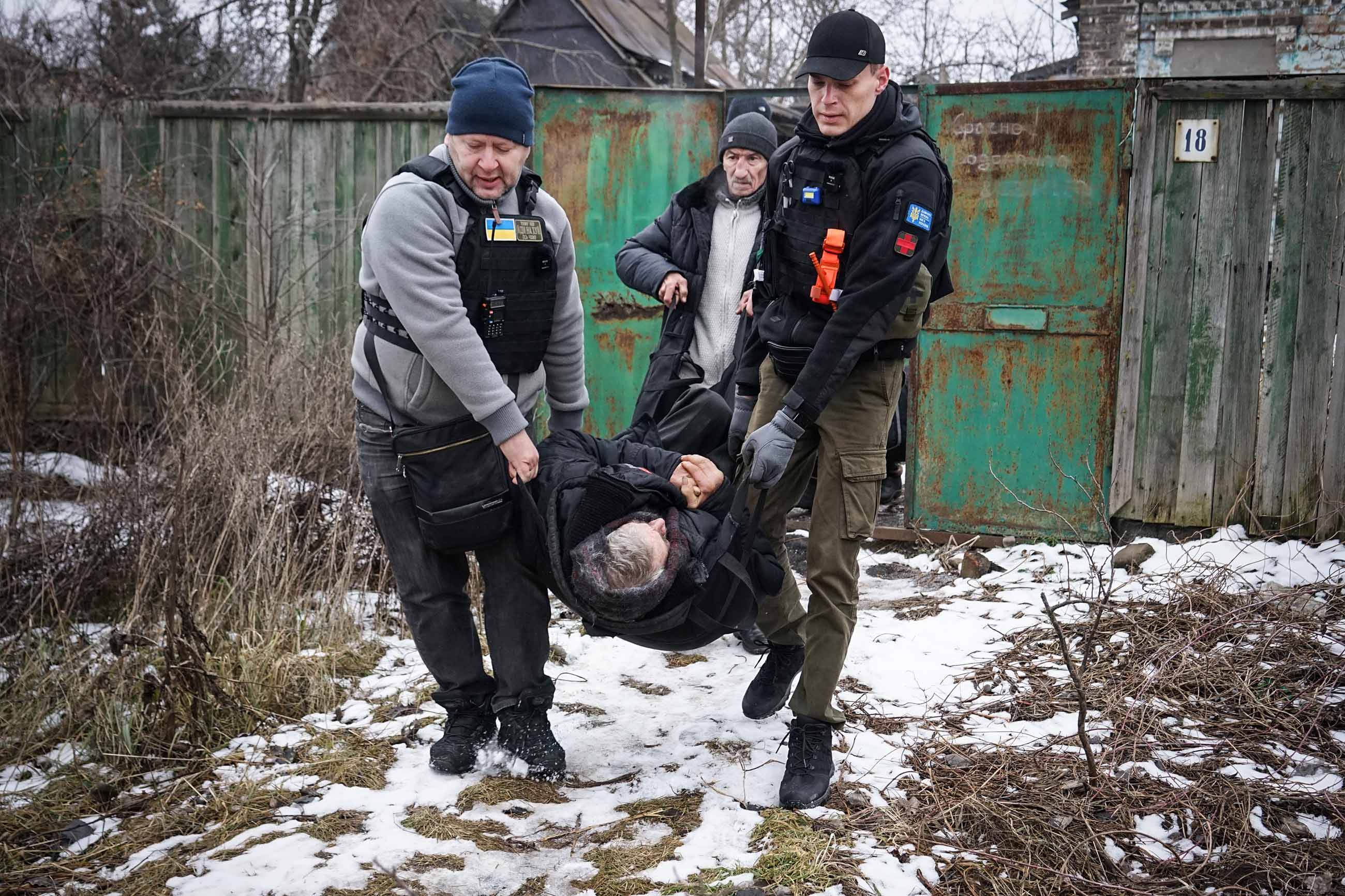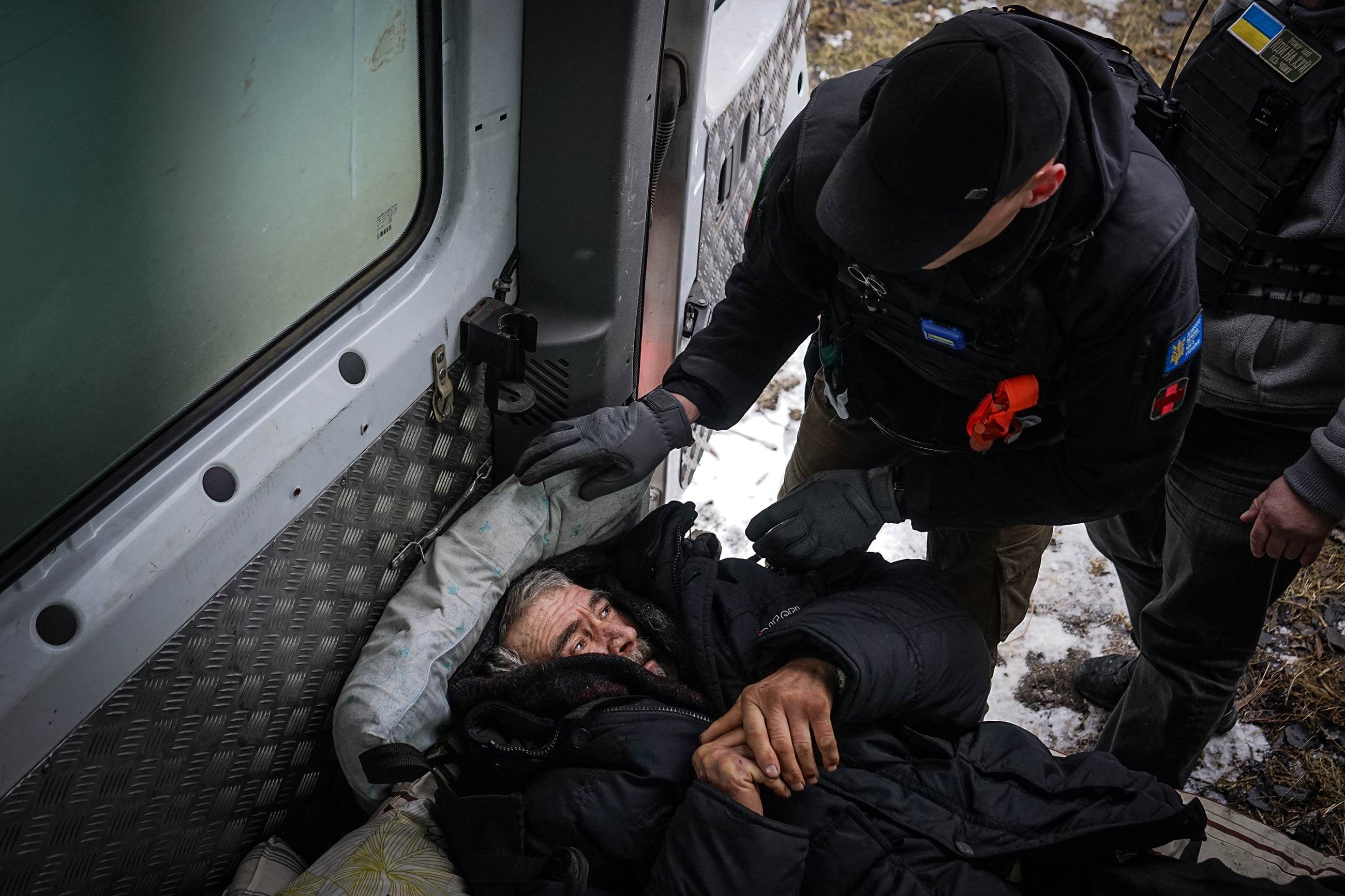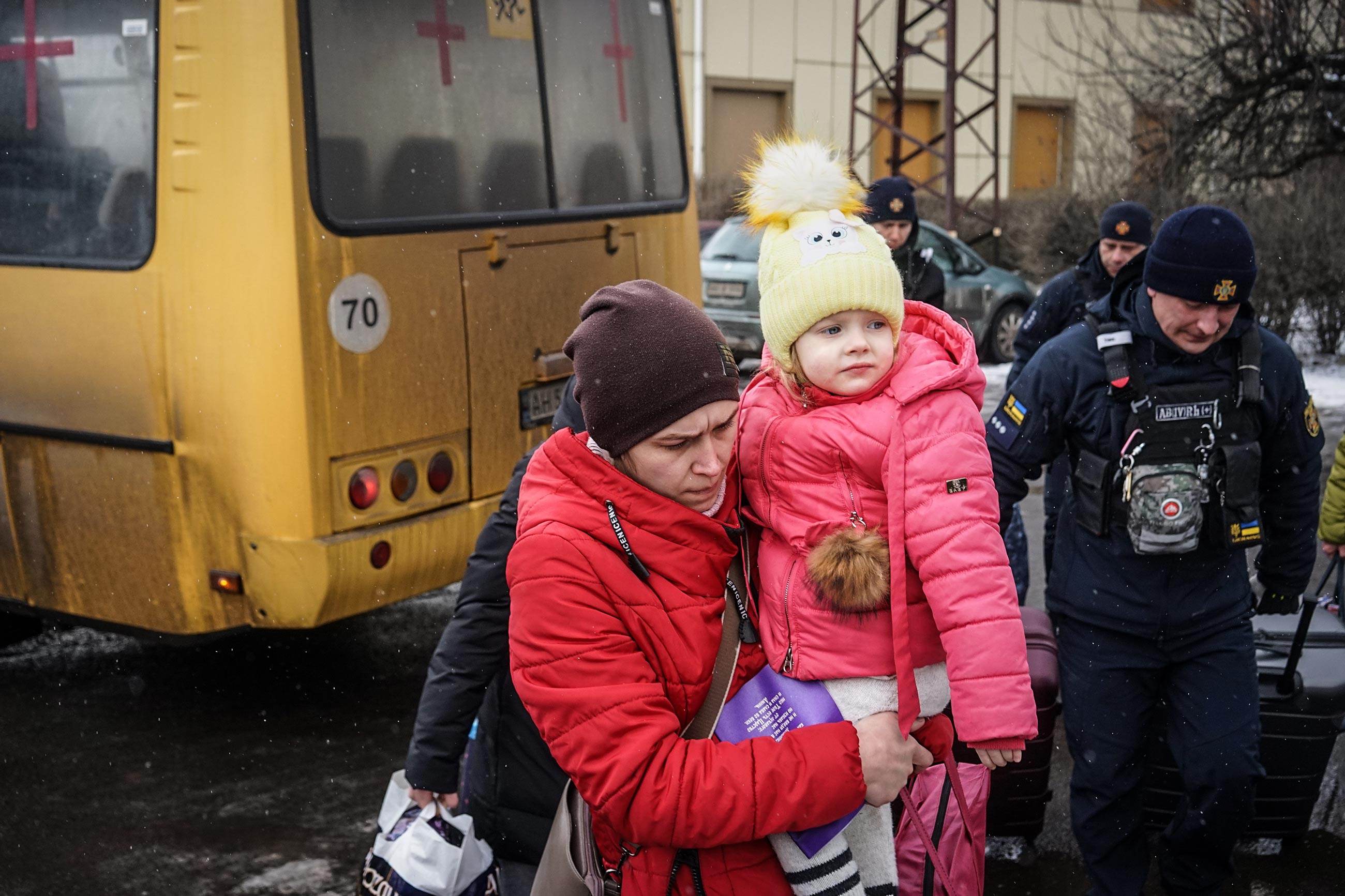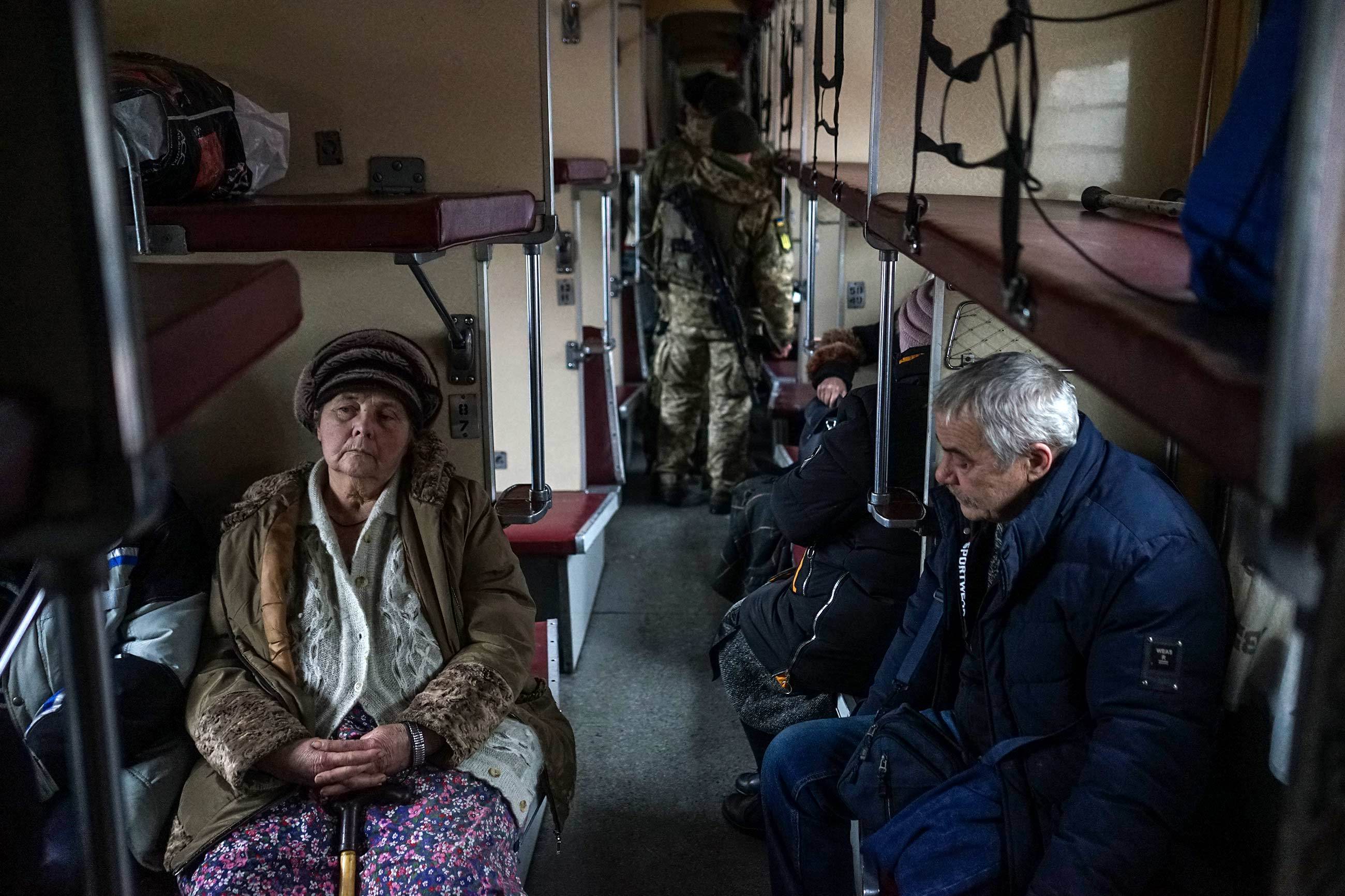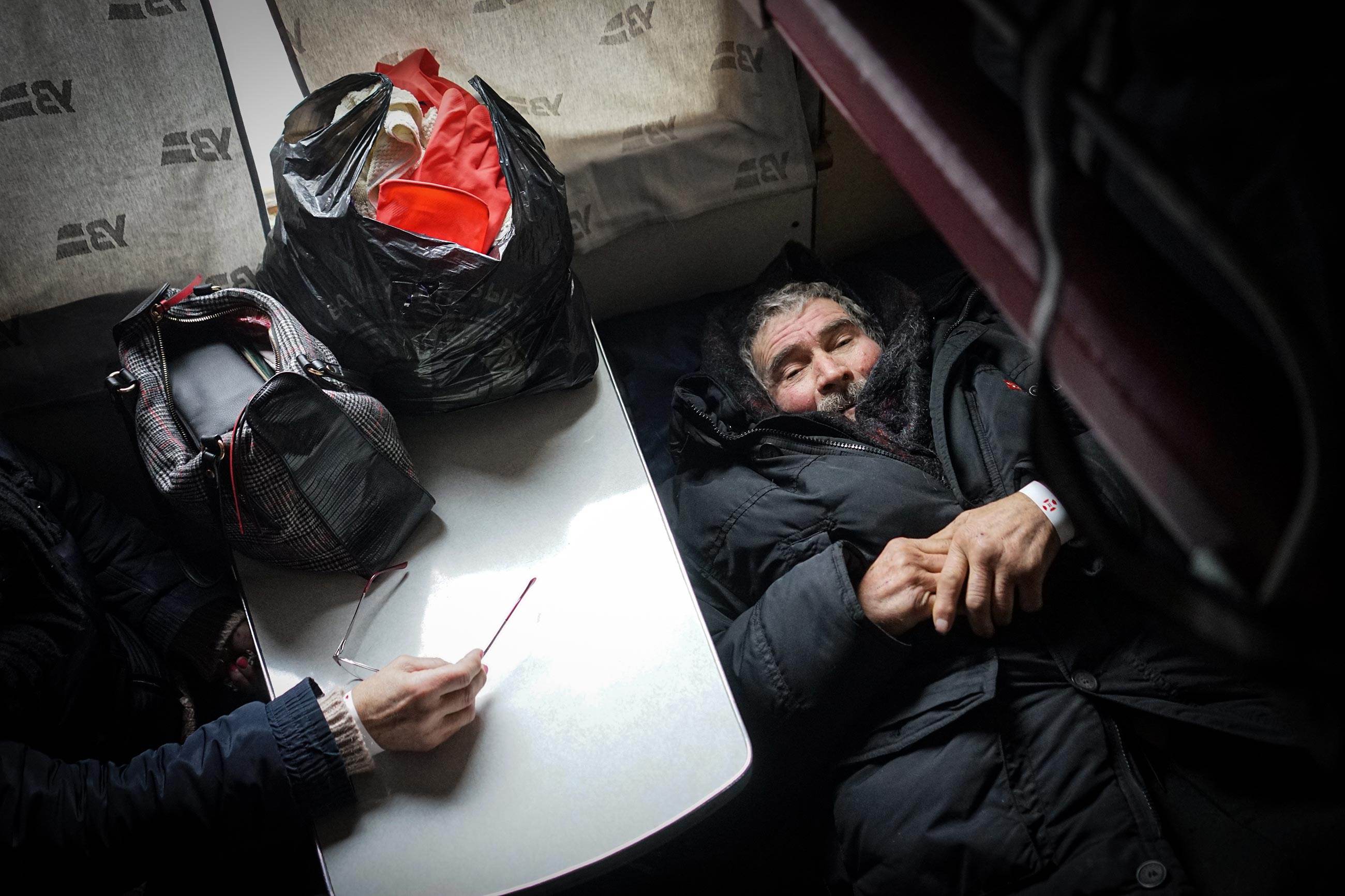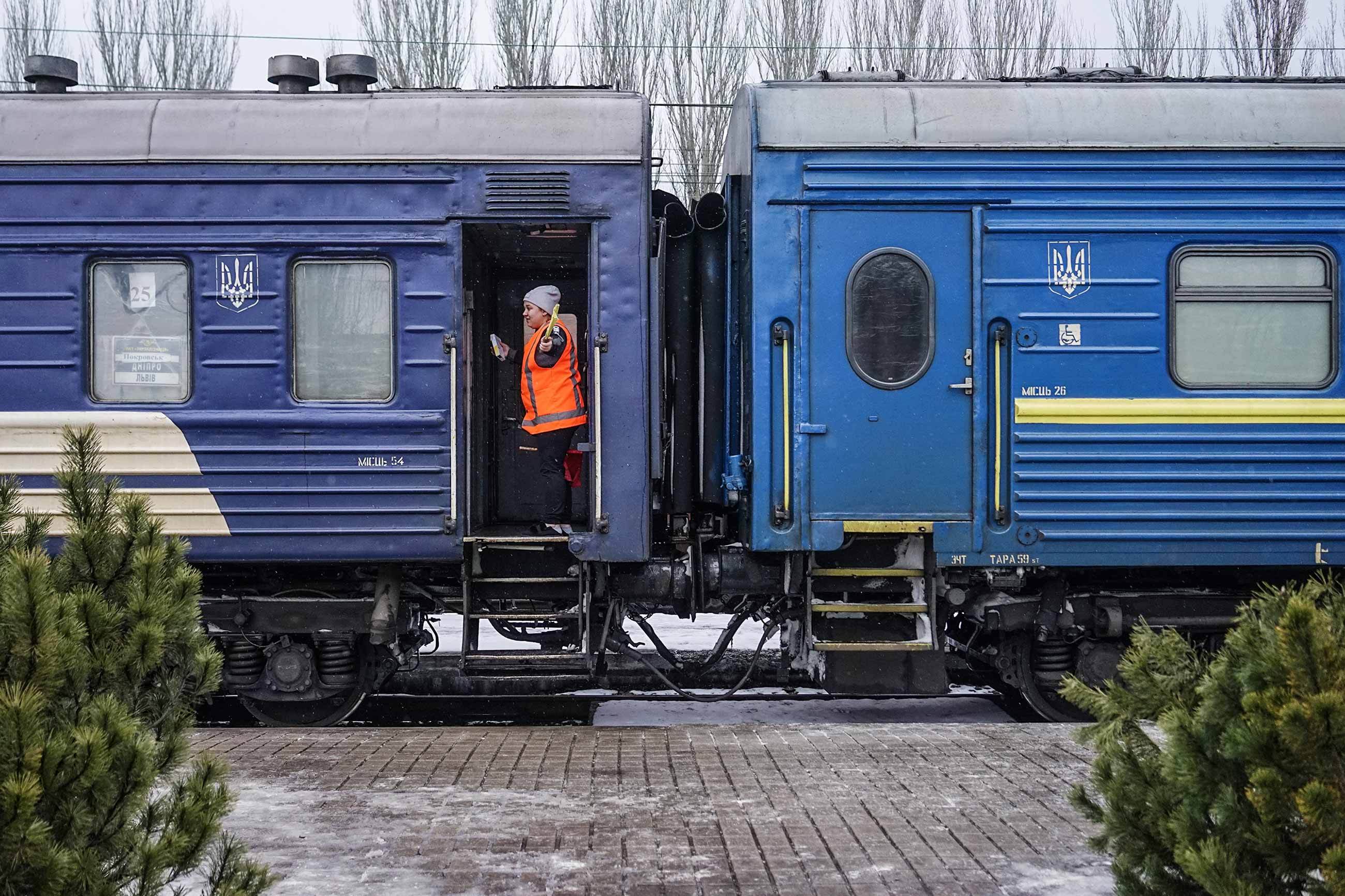Because of the war, civilians are forced to evacuate from the Donetsk region daily. The front line is unpredictable — the situation there can change anytime. Volunteers, risking their lives, take those in need to safety every day. The Zaborona team and “Vostok SOS” rescuers went to Chasiv Yar, located a few kilometers from the front line, and talked with the locals about why they do not want to leave dangerous areas and what could force them to evacuate.
Rescuers
We met the “Vostok SOS” team at one of the gas stations in Kramatorsk. Today we are evacuating people with reduced mobility from the Donetsk region. The route is partly complicated: from Kramatorsk to Chasiv Yar, then again to Kramatorsk, and then to Pokrovsk.
“In order not to take people from Kramatorsk to Chasiv Yar, first we will go to a more dangerous place, then we will return,” a man in a gray fleece jacket and bulletproof vest explains to Zaborona. It is Vladyslav Arseniy, a savior of the “Vostok SOS” organization, who, together with his partner Eduard Skoryk, has been evacuating civilians from the Donetsk region since last spring.

Eduard Skoryk (left) and Vladyslav Arseniy near the evacuation bus on the way out of Kramatorsk.
Photo: Ivan Chernichkin / Zaborona
“I started evacuating people from the middle of March [2022]; I was transported from Severodonetsk and Lysychansk. But then I was not involved in any organization, I did everything on my own,” says Eduard to Zaborona. “Then my funds ran out, and I realized I had to look for opportunities to help further. My choice fell on “Vostok SOS.” I am very glad that I decided to go here.”
Work with people
“Vostok SOS” is one of the oldest public organizations that help victims of the war in Ukraine. It was founded in May 2014, and since then, “Vostok SOS” has been helping civilians on the front lines in humanitarian, legal, and informational ways. One of the activities of the organization is evacuation from the frontline areas.
A person who wants to evacuate or evacuate a family member must leave a request on the hotline. From there, the information is transmitted to the rescuers, and a route is formed. The team arrives at the indicated address, picks up people, and brings them on the evacuation train to Pokrovsk.
However, Eduard says, it also happens that they come with an application, and the person refuses to leave. It usually occurs when relatives ask for help: there is often no communication in villages and towns close to the front line, so the arrival of rescuers can be a surprise and a shock.
Sometimes tragic events happen. One day Eduard took a woman and a son from Bakhmut. The passenger had diabetes, she fell into an insulin coma. The rescuer encountered such a woman for the first time and did not understand how to help the woman. The son said she just caught a cold, so she’s not feeling well.
“We quickly took her to the Kramatorsk hospital, but the doctors said that the woman had about a day to live and recommended that she be left so she would not die on the way. An hour after we left, she died,” says Eduard.
The woman’s son was evacuated to the west of Ukraine, and within a week, he hanged himself — he could not survive his mother’s death.

Volunteers and employees of the State Emergency Service help a man with reduced mobility to get on the evacuation train heading from Pokrovsk to Dnipro.
Photo: Ivan Chernichkin / Zaborona
“Another man was evacuated from Bakhmut. He had no limbs, and he was breathing very hard. In the emergency room, they gave him an inhaler for asthma, but it did not help. We brought the man on the train, but it got worse. We called an ambulance, and he died at the hospital. These are neglected cases because people wait for the last when no doctors are left in the city, and there is simply no one to help. “Unfortunately, it happens that it is too late to evacuate — doctors cannot help,” says Eduard.
A city near the front
Our car is heading behind a minibus with the “Vostok SOS” emblem. They hardly ever stop at roadblocks — the guys drive there daily, and everyone knows them. The road from Kramatorsk is flat. But potholes begin as soon as we turn off toward Chasiv Yar.
The city of Chasiv Yar is 17 kilometers from Bakhmut, where fierce battles are currently taking place. However, Chasiv Yar itself is also shelled every day. Despite this, civilians live there, and there are even a few grocery stores.

Residents of Chasiv Yar on one of the city’s central streets.
Photo: Ivan Chernichkin / Zaborona
Chasiv Yar can be conventionally divided into two parts: the right and left banks, and between them is the channel of the Siverskyi Donets river. Crossing the canal is dangerous; a few kilometers down the canal, there is a highway, and immediately behind it is a gray area. It is on this patch that you can hear the loudest explosions.
We quickly pass the crossing over the canal and enter the left-bank part of the city. The destruction here is more serious: most buildings have no glass on the windows, and destroyed houses and ruptures from shells and rockets are more common.
“We Survive”
We need the house almost at the eastern exit from Chasiv Yar. It is a four-story brick building with two entrances. Near one of them, a man is boiling water on a fire.
“Do you have relatives in Ukraine? If there is no place to stay, our organization provides housing, food, and medical assistance to the disabled and those bedridden,” says Eduard to the man.
He dryly replies that he does not want to evacuate but takes the organization’s brochure with hotline numbers. We introduce ourselves. His name is Igor, and he looks to be in his 60s.
“We don’t live, we survive. There is no heat, light, or communication — everything is fucked up. There is nothing to leave. You’ll take it away, but what’s next? Will they give two thousand hryvnias and a finger to the mouth, that’s all?” Igor explains his refusal to evacuate.

Eduard Skoryk helps carry things from the apartment to the minibus.
Photo: Ivan Chernichkin / Zaborona
Yuriy tells the story of his son Danylo, who died at the front.
Photo: Ivan Chernichkin / Zaborona
While the rescuers are helping the residents who are ready to evacuate to transfer their belongings to the car, Igor’s neighbor Yuriy comes outside. In the conversation, it turns out that he recently lost his son in the war.
“Danylo Horbenko, 23 years old. The boy was engaged in sports and had many medals. He graduated from Bubka Sports College, Lutsk Institute. He wanted to continue his studies to join the police. But it so happened that he joined the service under a contract. He died a few days ago near Siversk. The funeral is now in Dnipro on Thursday,” says Yuriy to Zaborona.
He will go to the funeral together with the mother of his son. But then plans to go back. The reason is the same: there is nothing to live for, and he doesn’t trust volunteers who promise to provide housing.
Eduard leads 89-year-old Tamara Yehorivna out of the entrance, followed by her son Volodymyr with packages. They lived in Chasiv Yar all their lives and did not want to leave because this is their home. They decided to evacuate after a shell hit their house.
“Volunteers came, went around the apartments. At first, we didn’t want to go, because it was possible to live: heating, water. And then nothing happened. A cluster shell flew into a nearby window, smashing everything around. The windows were blown out both in the kitchen and bedroom,” Tamara Yehorivna says to Zaborona.

Tamara Yehorivna leaves her apartment in Chasiv Yar.
Photo: Ivan Chernichkin / Zaborona
The shell flew into the kitchen of her neighbors. At that time, the owners were no longer at home. In that apartment, the roof got broken, and there were holes in place of the windows.
Volodymyr boarded up the broken windows with boards, but it didn’t help: it was freezing inside, and the temperature was almost the same as outside. The woman’s niece arranged for the evacuation. She was also evacuated from Chasiv Yar and now lives in a safe region.
We get into cars. We need to leave quickly because the sounds of explosions are getting closer. When crossing the canal, the minibus of rescuers stops before us. Eduard and Vladyslav get out of the car, and a couple in their 50s run up to them with bags on trolleys. The rescuers load them into the car.

Eduard Skoryk opens the minibus door to put the belongings of the people whom the volunteers picked up while crossing the channel of the Siverskyi Donets river.
Photo: Ivan Chernichkin / Zaborona
It seems we were only supposed to get two people out of here. Unplanned evacuation? Just the day before, we were arguing in the team about why people didn’t want to leave. The operator, Zhenya, believed that whoever wanted to go would leave the danger on foot, but I objected. This scene could be a vivid confirmation of his words if we hadn’t stopped on the city’s right bank and dropped off the couple. It turned out that they asked for a ride to the store. Walking would be far and dangerous.
Lonely but not abandoned
We are heading to Kramatorsk. Ambulances, military, and volunteer cars rush along the highway; civilians rarely drive here. At the entrance to Kramatorsk, we stop and look for Sonyachna street: we need to pick up the next passenger.
A man, who looks about 65 years old, is standing near the right house. He meets the rescuers and takes them to the house. Today we will pick up not him but a neighbor.
“He is 72 years old. We have been friends for nine years, and I live nearby. A normal guy, but his life didn’t work out for him, he didn’t work out with women, which is why he lived here alone. “He used to heat the house with a stove, and then he fell, and now he can’t walk,” the man explains.
The house is tiny and untidy. The windows are covered with sandbags and boarded up. Inside, steam comes out of your mouth, and the sharp smell of dampness, toilet, and spoiled food hits your nose. A room was two steps away opposite the entrance, although only the hinges remained from the door.
In the room, an old man is lying on a bed strewn with pillows and clothes. He does not really understand what is happening and only looks surprised at the new faces in his house.

Anatoly Dmytrovych in bed in his house in Kramatorsk.
Photo: Ivan Chernichkin / Zaboron
“These are volunteers, Anatoly Dmytrovych, don’t be afraid. As I told you, they will take you to the hospital through Pokrovsk to the Dnipro,” says a female voice behind us. She is a social worker who cared for the old man and applied for his evacuation.
The woman carefully wraps the grandfather’s feet in scarves and explains that they are so swollen that they do not fit into any shoes. Before evacuating passengers who can only lie down, it is necessary to check for the presence of a diaper. The woman took care of that. The man is ready for transportation. The woman turned him on his side, placing a fabric stretcher under his back.
“He has an electronic referral and needs to see a therapist immediately. The neighbor said that he might have high blood sugar. The left leg is frostbitten or broken — he recently fell. But it is swollen and red, he cannot stand on it,” reports the social worker.
One of the rescuers leaves the house and returns in a minute with Volodymyr, the son of Tamara Yehorivna. It will not work to carry a man together because he is heavy. Volodymyr doesn’t know what to do immediately and mistakenly pulls the stretcher on himself: Anatoly Dmytrovych almost falls to the floor. Eduard explains how to carry the stretcher, and the man is in a special place in the minibus in a few minutes.

ВолонтеVolunteers of the “Vostok SOS” organization, together with Tamara Yehorivna’s son, carry Anatoly Dmytrovych to the evacuation bus.
Photo: Ivan Chernichkin / Zaborona
Eduard fixes Anatoly Dmytrovych’s pillow.
Photo: Ivan Chernichkin / Zaborona
There is no more home
The next destination is also in Kramatorsk, which is closer to the city center. A woman in her 50s comes out of a high-rise building with a suitcase in her hands. It is Svitlana. She says that she has already left the Donetsk region several times. Her house was in Barvinkovy, Kharkiv region. The city was on the front line and survived heavy shelling that destroyed Svitlana’s house.
A woman rented an apartment in Kramatorsk. She used to go to Pereyaslav but could not find a job. She returned to Kramatorsk for documents to continue looking for an opportunity to earn money, but just the day before, the city was shelled, so she decided to evacuate.
“I haven’t had a home since April. I don’t know where I’m going. I will ask on the spot, and I will look for vacancies. For two thousand from the state, you won’t be able to get by on a rented apartment,” the woman explains to Zaborona. “My mother-in-law returned to Barvinkovo, but her house is gone, they live with her husband in an apartment. But at least they have a job, you know?”
Train to safety
It takes about one and a half hours to drive from Kramatorsk to Pokrovsk. All evacuees from the Donetsk region are there. In the afternoon, a train leaves for Dnipro from the Pokrovsky railway station — one of the four cars is an evacuation car, and tickets are sold for the others.
Volunteers and the National Police are already on duty near the train — they help seat passengers. People with reduced mobility are brought to the carriage by a special lift.

People are heading to the evacuation train from Pokrovsk to Dnipro.
Photo: Ivan Chernichkin / Zaborona
Anatoly is brought into the first compartment and placed on the bottom shelf, Svitlana and Tamara Yehorivna and their son sit opposite him. The car is quickly filling up with people: other organizations brought several busloads of civilians for evacuation today.
People are crowded – there are many more passengers than free seats, so three or four people are on one shelf. Some woman demands to be transferred to a less crowded compartment. The volunteer, who seats everyone, patiently explains that this is an evacuation car, and the seats in it are free, so she cannot choose where to sit.

People in the evacuation train of the Pokrovsk — Dnipro train.
Photo: Ivan Chernichkin / Zaborona
Anatoly Dmytrovych in the evacuation train.
Photo: Ivan Chernichkin / Zaborona
After a few minutes, it becomes difficult to squeeze through the passage: the entire corridor is littered with bags and suitcases. A child’s cry breaks through the general clamor. Another ten minutes and the train will take the evacuation car to safe regions.
Our evacuees will leave the wagon in Dnipro. Anatoly will be taken immediately to the hospital, and the remaining “Vostok SOS” volunteers will be sent to the shelter.

Departure of the evacuation train Pokrovsk — Dnipro.
Photo: Ivan Chernichkin / Zaborona
You can contact the “Vostok SOS” hotline for evacuation issues, as well as for humanitarian, legal and psychological support at the following numbers: 0 800 332 614 (toll-free), +38 099 710 48 72, +38 099 311 53 14 (Viber), +38 096 108 60 48 (Telegram).

